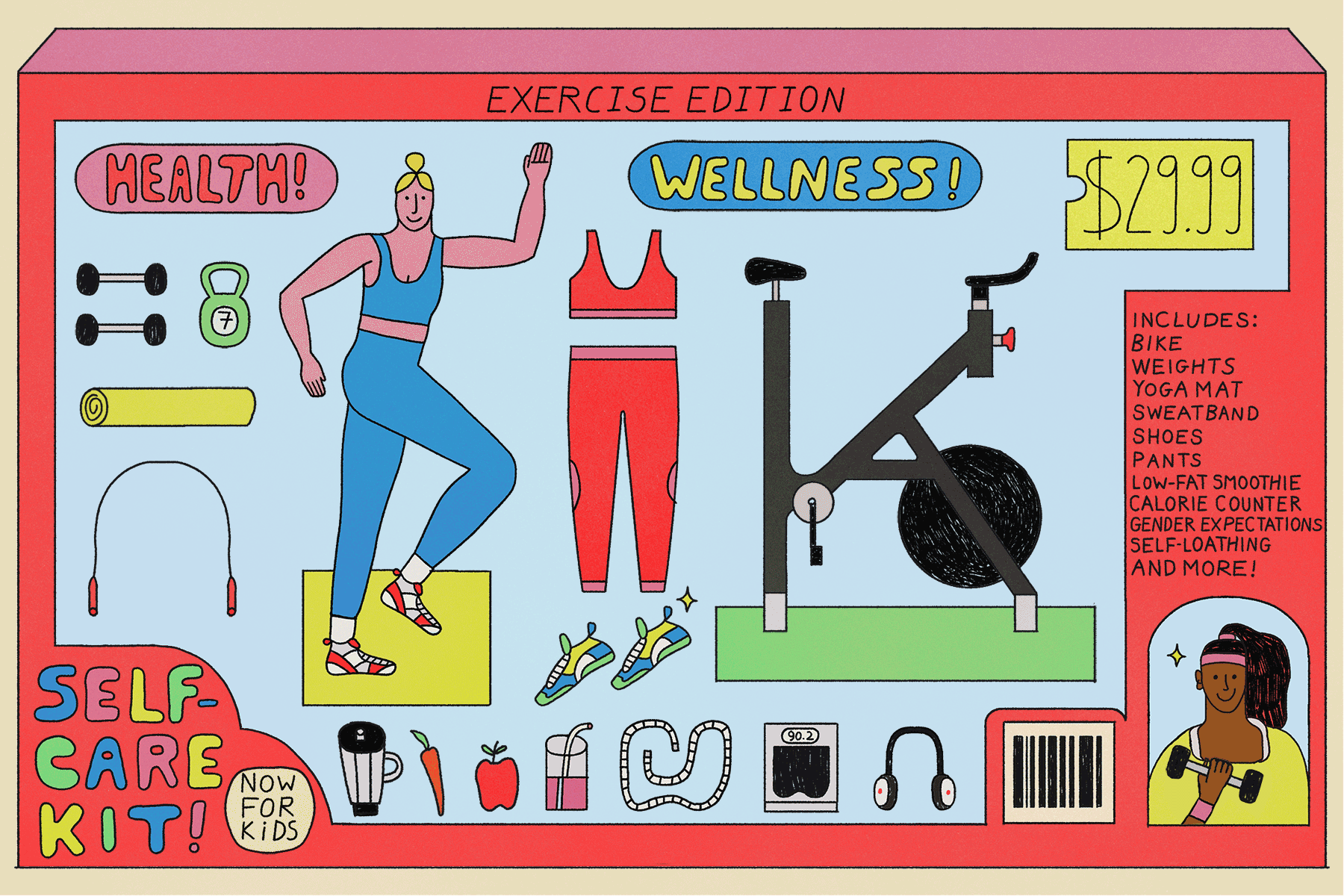Fitness Equipment That Helps Grown-Ups Can Hurt Kids
The parents of a 2-year-old boy from Staten Island, N.Y., learned the hard way just how dangerous exercise equipment can be. In September, the boyâs skin was pulled off his hand when he touched the belt on a treadmill.
Another 2-year-old boy, from Johnson City, Tenn., severed three fingers when his hand became caught in the front wheel of an exercise bike in May 1995.
And the hair of a 3-year-old girl from Cedar Rapids, Iowa, was pulled from her scalp when it was caught in part of a manual exercise bike in December 1996.
In the last decade, the popularity of home exercise equipment has skyrocketed. According to a 1997 survey by the Fitness Products Council, about one-third of all American homes have some type of exercise equipment. Treadmills, ski machines, stationary bicycles and free weights were among the best-selling items, helping to bring in more than $3 billion for manufacturers of exercise equipment.
The growth in sales of such equipment is good news for fitness advocates, whose message of exercise is reaching more and more Americans. But for parents of young children, exercise machines can pose a significant safety threat in the home, capable of severing small fingers or tearing tender skin.
In 1996, 17 people were killed and more than 32,000 people were treated in the countryâs emergency rooms for injuries related to exercise equipment, according to the U.S. Consumer Product Safety Commission. The figure is an increase of more than 500% since a 1982 study by the commission. And about half of those injuries occurred in children younger than 15, mostly boys.
Health officials are quick to point out, though, that injuries related to exercise equipment represent only a small fraction of childhood injuries that occur in the home. More common are the millions of injuries and thousands of deaths that result every year from fires and burns, drownings, falls, chokings, suffocations and poisonings.
Nonetheless, the safety risks of exercise equipment were enough to shock Ed Quintana, an avid runner and father of two young children. He discovered the commissionâs figures after he became concerned about using a treadmill in his home and decided to do some research on his own.
âThe numbers astonished me,â said Quintana, a 37-year-old accountant from El Paso. âI started wondering how we could raise public consciousness about this issue. I wondered, âWhy isnât anyone saying anything?â â
So in what almost seems like a one-man mission to him, Quintana has for the last year written scores of letters to government officials, the media and doctorsâ groups seeking to draw attention to the potential dangers of exercise equipment.
âThis issue has been hitting deaf ears,â Quintana said. âBut Iâd say the alarm bell should be going off.â
The alarm is faint in the research community, which has conducted less than half a dozen studies on the topic. One of the most recent appeared in a 1994 issue of the Archives of Pediatric and Adolescent Medicine, which showed that injuries related to exercise equipment were âfrequent and potentially severe.â
Alan DeJong, a pediatrician at the Alfred I. duPont Institute in Wilmington, Del., co-wrote the study and said he became interested in the issue after seeing two children within six weeks with finger amputations caused by exercise bicycles. He agreed that not much research or attention is focused on this problem.
âMost of the injuries are not life-threatening or permanently disabling,â DeJong said. âWe tend to focus more on automobile safety like seat belts and handgun safety. This is something that does catch the minds of parents, but I think from a medical or public health perspective, itâs not seen as a major issue.â
Most of the injuries occurred to young children who were unsupervised and using the equipment in an inappropriate way, DeJong said. The older machines tend to be more dangerous, he said, because they often donât carry the safeguards that the newer ones have.
Gregg Hartley, executive director of the Fitness Products Council of the Sporting Goods Manufacturers Assn., said the industry is aware of the potential problems. He emphasized that safety is a big priority for manufacturers, who have placed a number of devices on their equipment to prevent injury.
âBut itâs virtually impossible to engineer a machine that you canât in some form or another hurt yourself on,â Hartley said. âUsers have to realize that exercise equipment is not designed for small children. Itâs not a jungle gym. Children should never be left unsupervised.â
The National Safe Kids Campaign estimates that up to 90% of all unintentional injuries can be prevented, and injuries related to exercise equipment are no different. Home injuries often occur when children are not supervised or when a preventive measure was not being used, said Kate Schaffer, Washington, D.C., Safe Kids coordinator.
Schaffer doesnât want parents to stop buying home exercise equipment. What she wants is for parents to understand the potential dangers and take the proper precautions to prevent their young children from getting injured.
âItâs just a matter of common sense,â she said.
More to Read
Inside the business of entertainment
The Wide Shot brings you news, analysis and insights on everything from streaming wars to production â and what it all means for the future.
You may occasionally receive promotional content from the Los Angeles Times.








